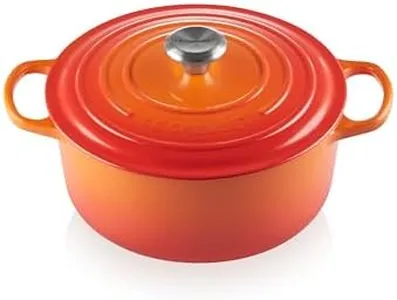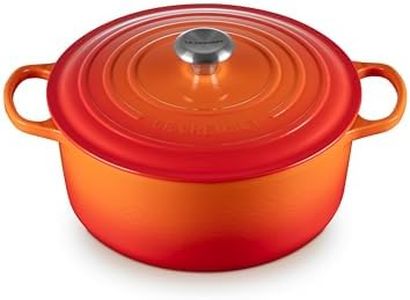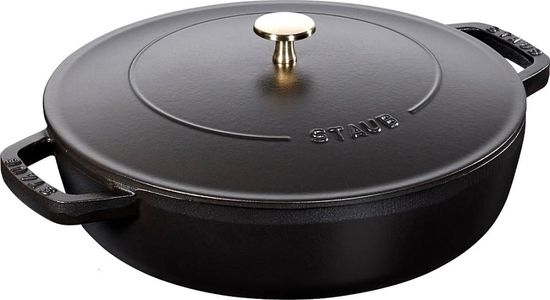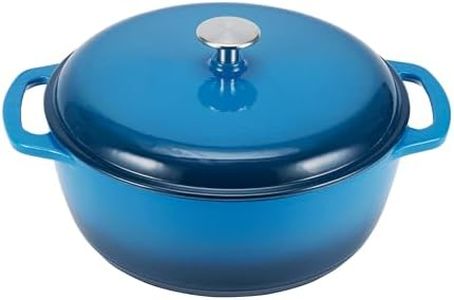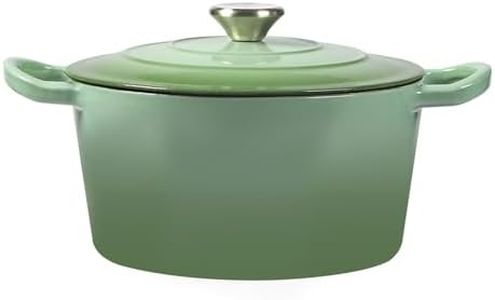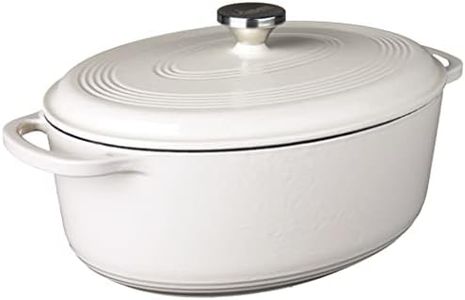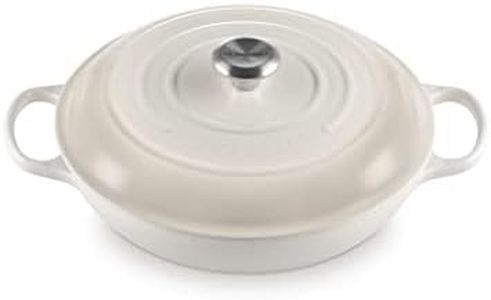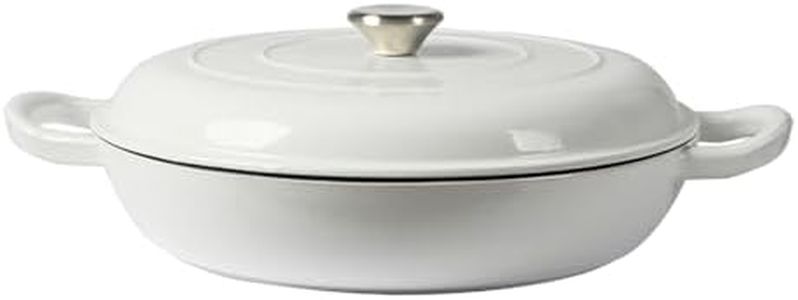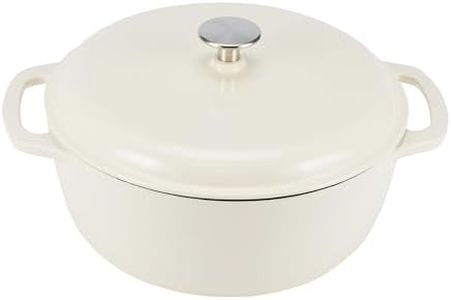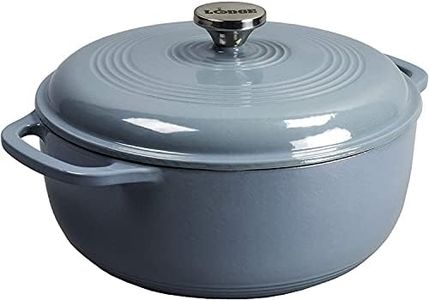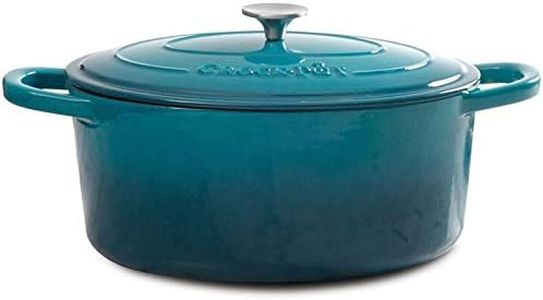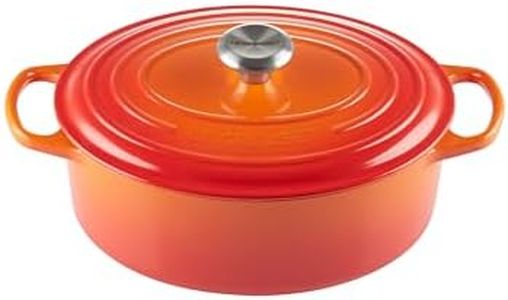We Use CookiesWe use cookies to enhance the security, performance,
functionality and for analytical and promotional activities. By continuing to browse this site you
are agreeing to our privacy policy
10 Best Cast Iron Dutch Oven
From leading brands and best sellers available on the web.Buying Guide for the Best Cast Iron Dutch Oven
Choosing a cast-iron Dutch oven can be a rewarding investment for your kitchen, as it’s a versatile piece that excels in slow-cooking, baking, frying, and braising. To pick the best fit for your needs, consider how much food you typically prepare, where and how you plan to use it, and what features matter most to you. Evaluating key specifications will help you find a Dutch oven that will serve you well for years to come.Size (Capacity)Size refers to how much the Dutch oven can hold, usually measured in quarts or liters. This is crucial because it determines how much food you can cook at once. Small Dutch ovens (about 2-3 quarts) are ideal for side dishes or meals for one or two people, while medium sizes (4-6 quarts) suit most families and are the most versatile. Larger models (7 quarts and above) are great for big families or entertaining. Think about the most frequent portion size you cook to pick the right size for you—if you regularly cook for groups, go bigger, but for daily small meals, a medium size often does the trick.
Material and ConstructionWhile all Dutch ovens in this category are cast iron, some are bare, and others are coated with enamel. Bare cast iron is durable and excellent for high-heat tasks but requires seasoning and careful maintenance to prevent rust. Enameled versions are easier to clean and won't react with acidic foods. Choose bare cast iron if you love traditional cookware and don’t mind maintaining it, or enameled if you prefer a lower-maintenance, colorful option.
WeightDutch ovens are naturally heavy, but their weight can still vary. Heavier ovens typically retain heat better and distribute it more evenly, which is great for slow cooking. However, if lifting and moving heavy pots is a challenge for you, look for lighter versions or consider what weight you’re comfortable handling when it’s full of food and hot.
Lid DesignThe lid is important for moisture retention. Some lids are flat, while others are domed, and some have basting spikes or ridges inside to help drip moisture evenly over food. A well-fitting, tight lid prevents steam from escaping, keeping dishes tender and flavorful. If you do a lot of slow cooking or baking bread, choose a model with a heavy, tight-fitting lid, ideally with interior ridges for self-basting.
Oven and Stovetop CompatibilityDutch ovens should be safe to use on a variety of heat sources—gas, electric, induction stovetops, and in the oven. Enameled cast iron is versatile, but always check the manufacturer’s details regarding maximum temperatures (like for broiler or baking use) and handle safety. Consider where you plan to use it most often; if you want to use it over a campfire or grill, confirm it’s suitable for that.
Ease of Cleaning and MaintenanceBare cast iron requires seasoning and should be cleaned without soap, while enamel-coated Dutch ovens can usually be cleaned more easily and don’t need seasoning. If easy cleanup is your priority, or you want to avoid seasoning, enamel is the way to go. However, some enameled coatings aren’t dishwasher safe and may stain with heavy use, so if that concerns you, check cleaning guidelines.
ShapeDutch ovens come mainly in round or oval shapes. Round Dutch ovens are best for general cooking and fit well on stovetops and in ovens, making them an all-purpose choice. Oval Dutch ovens provide extra space for roasts and long cuts of meat but may not heat as evenly on a burner. If you mostly cook stews, soups, or casseroles, round is usually best. If you love cooking whole chickens or roasts, oval might suit you better.
